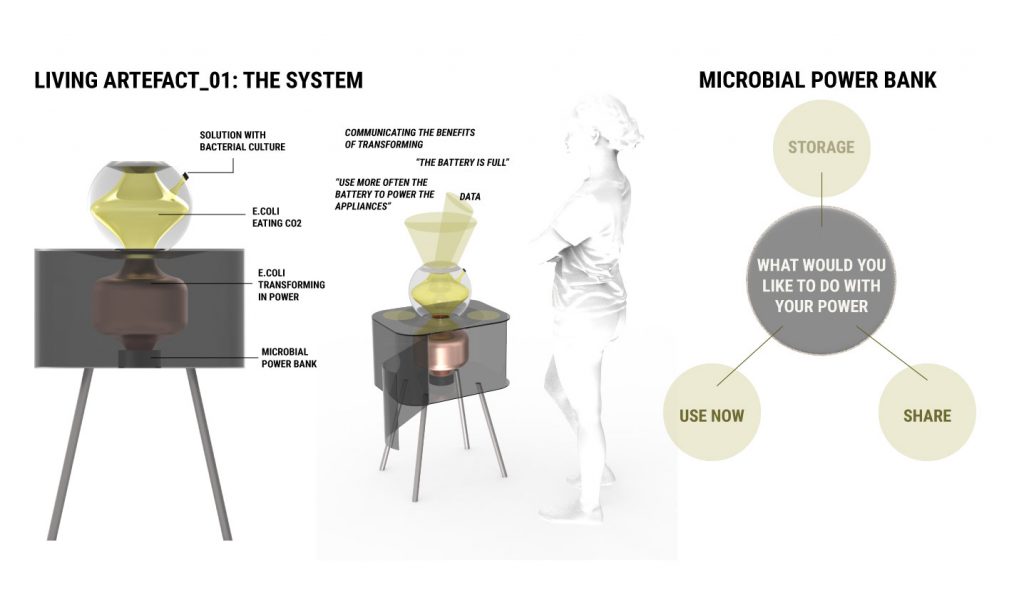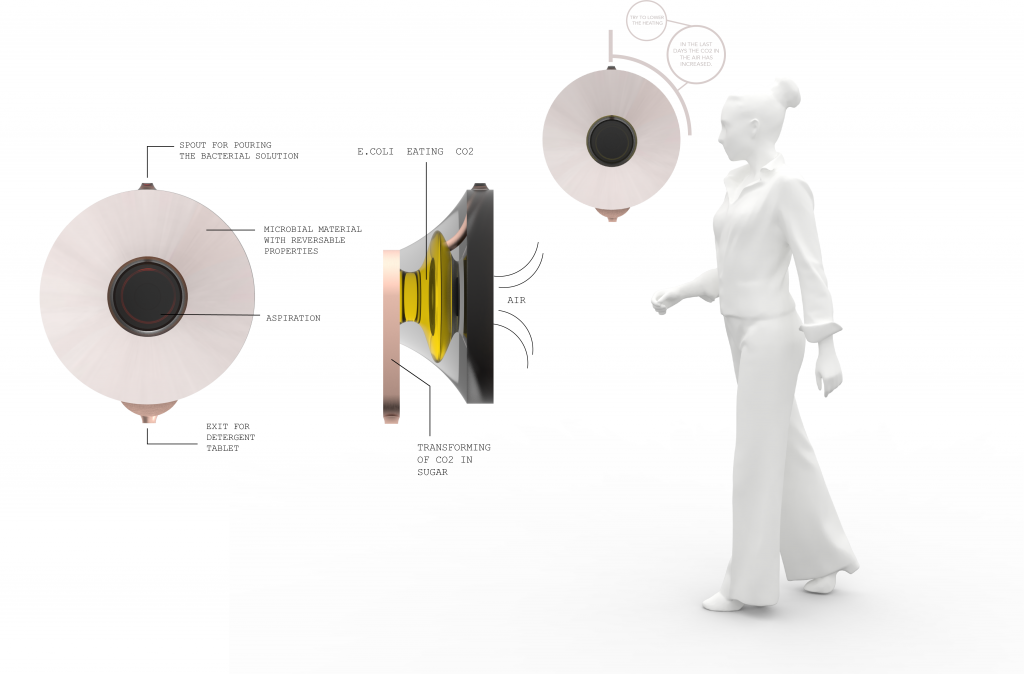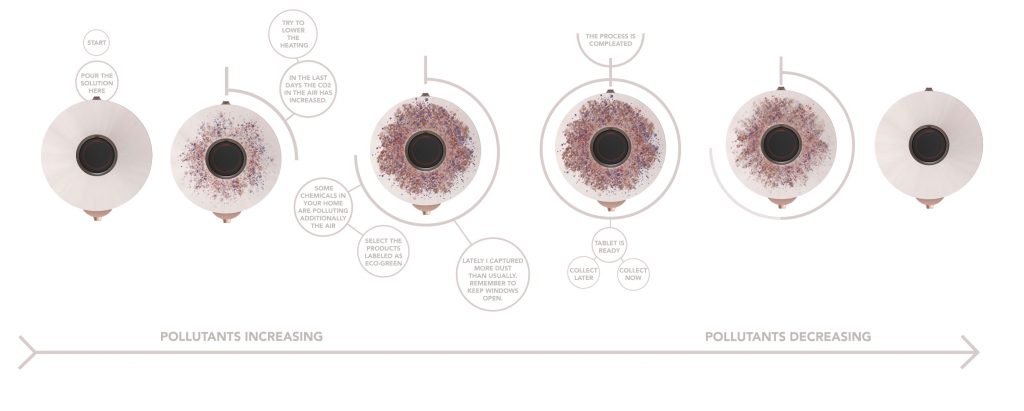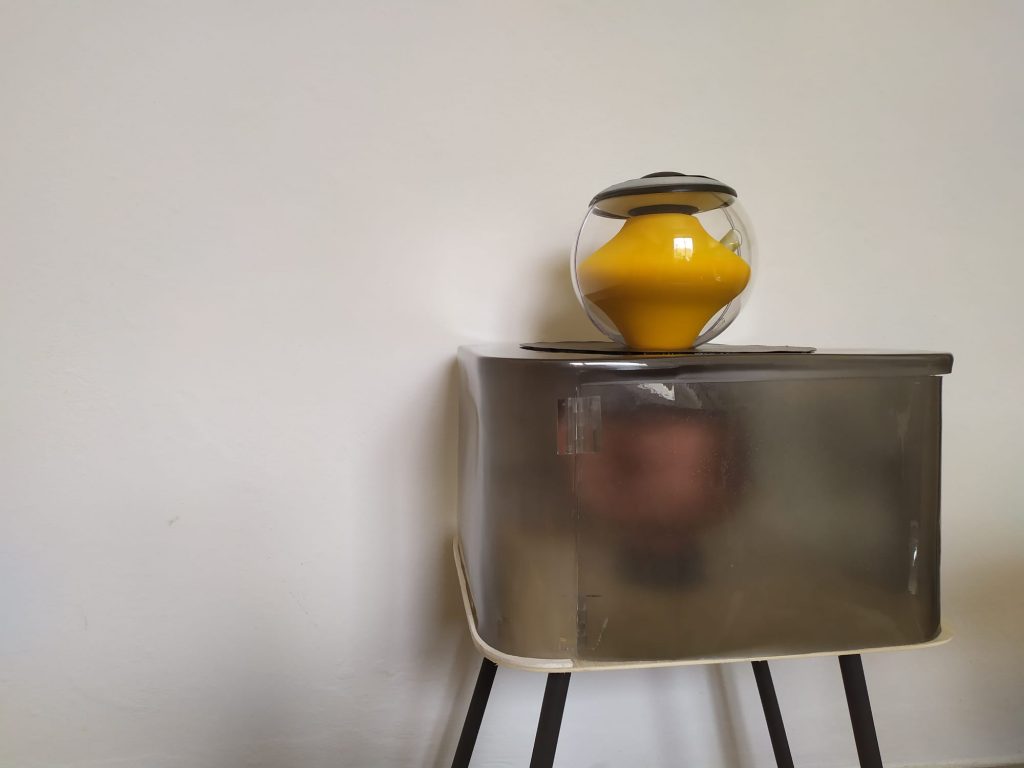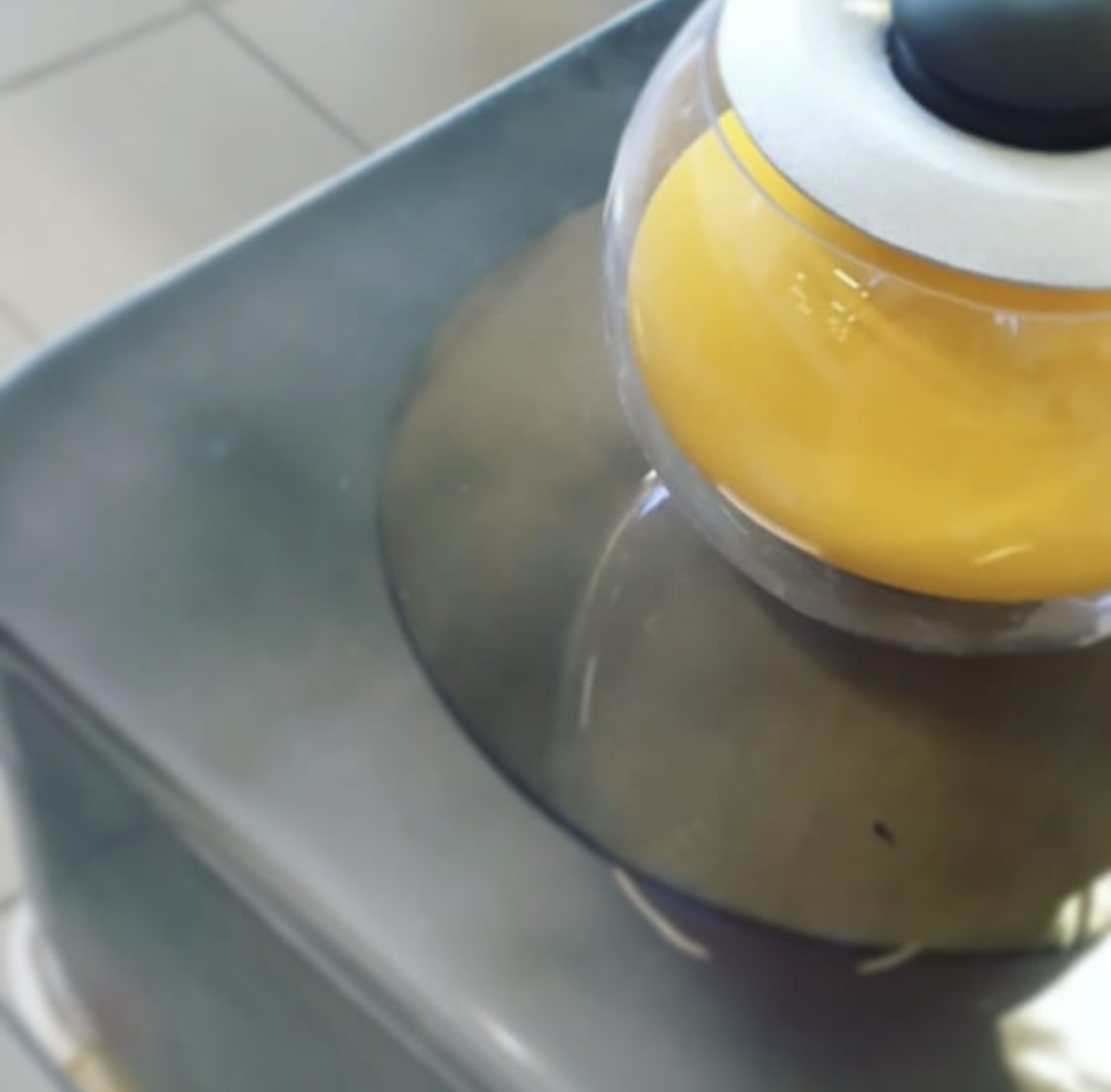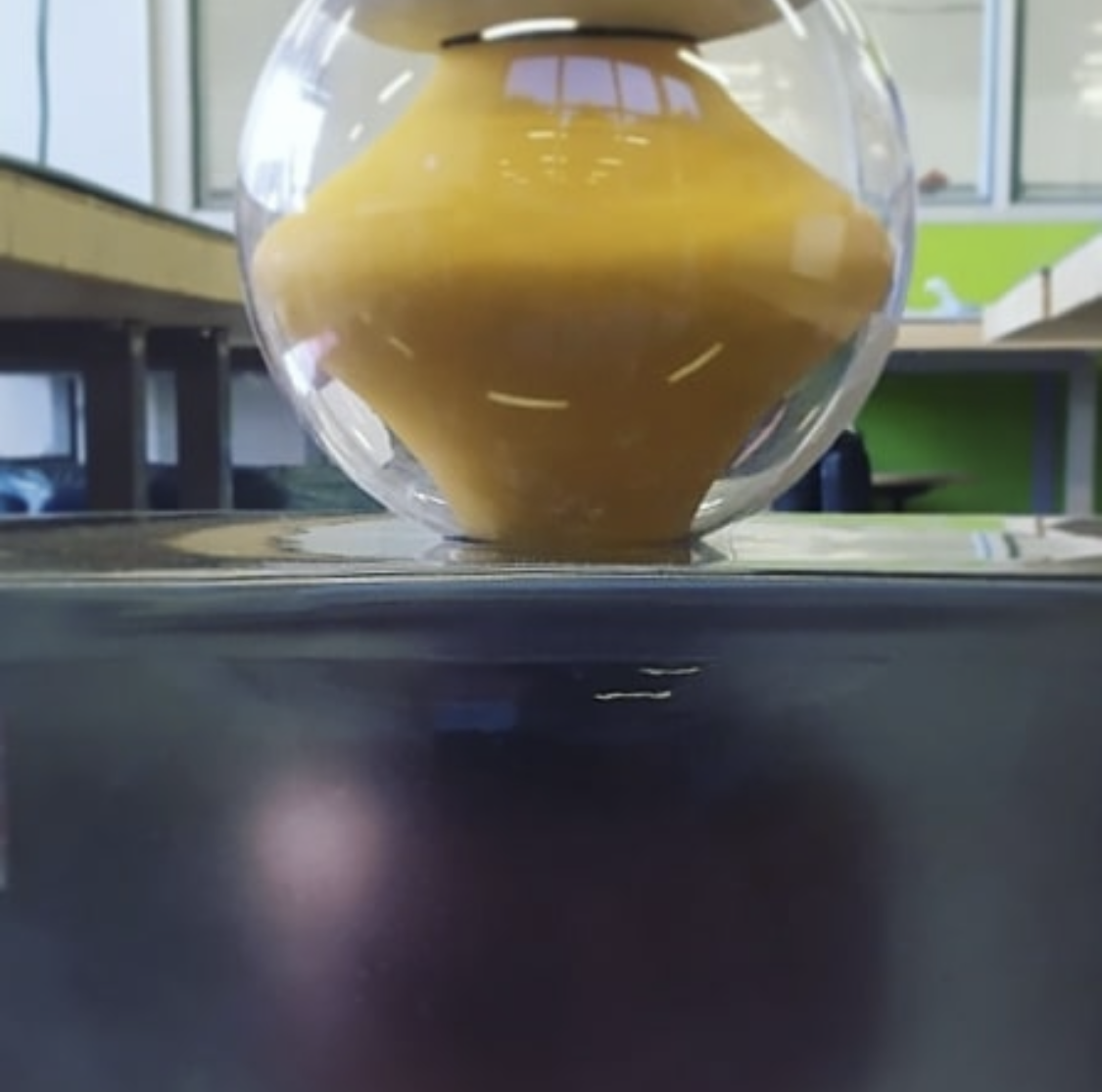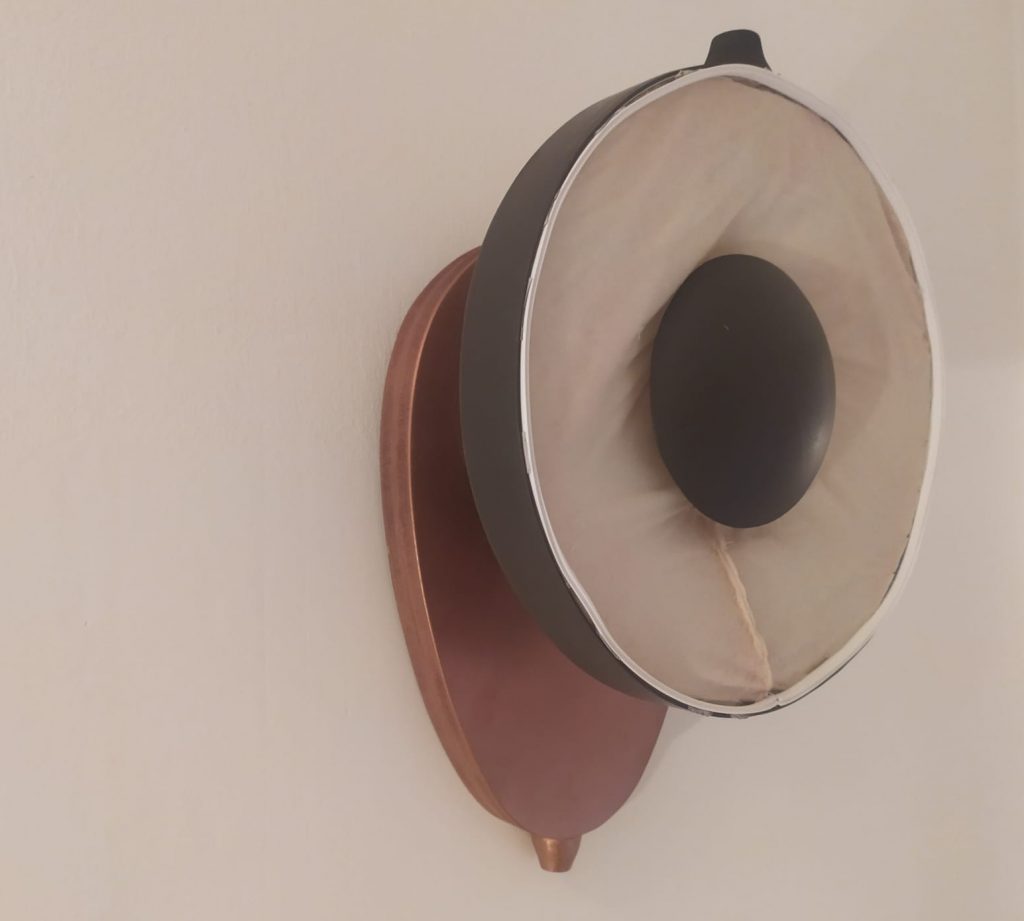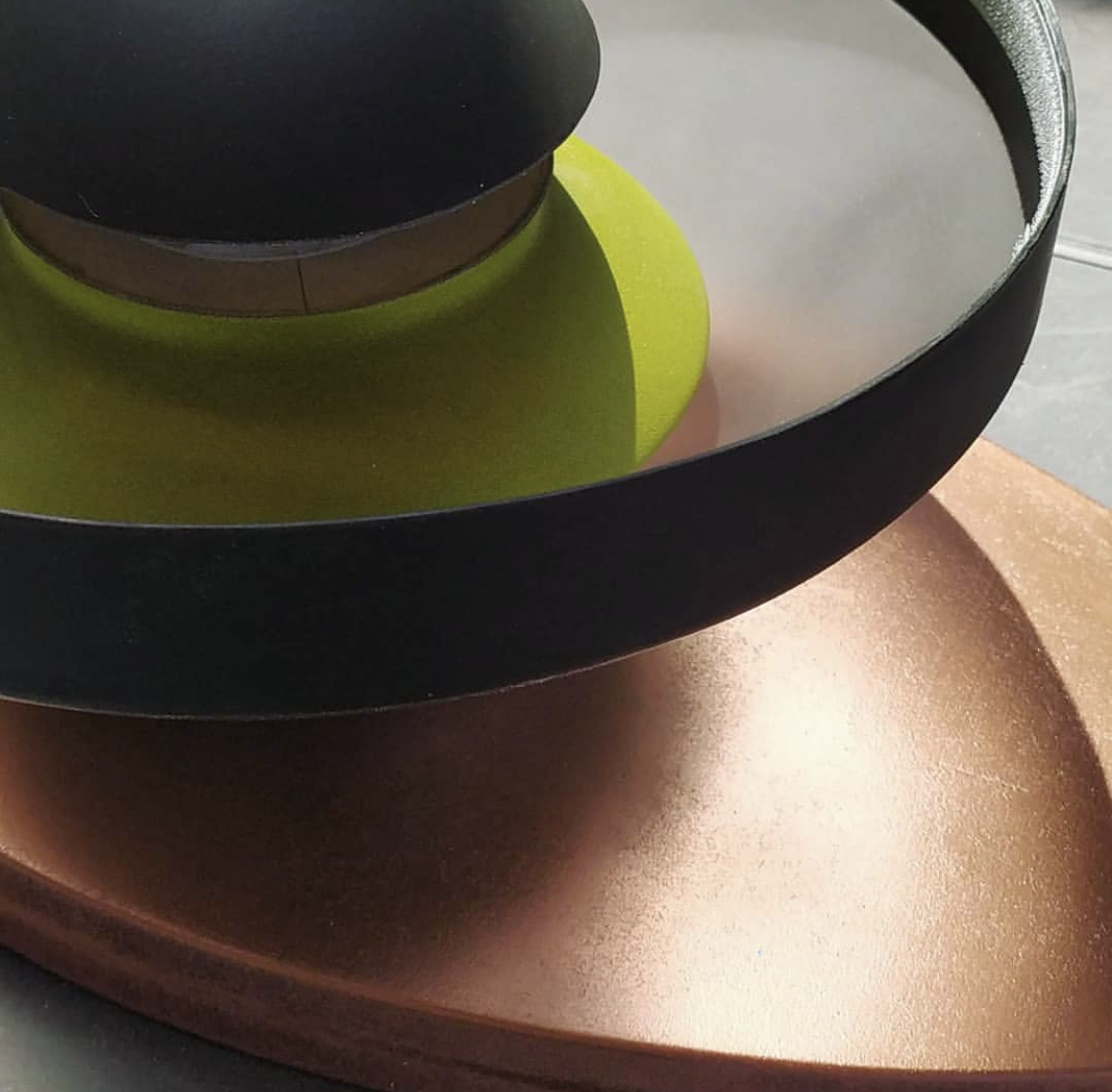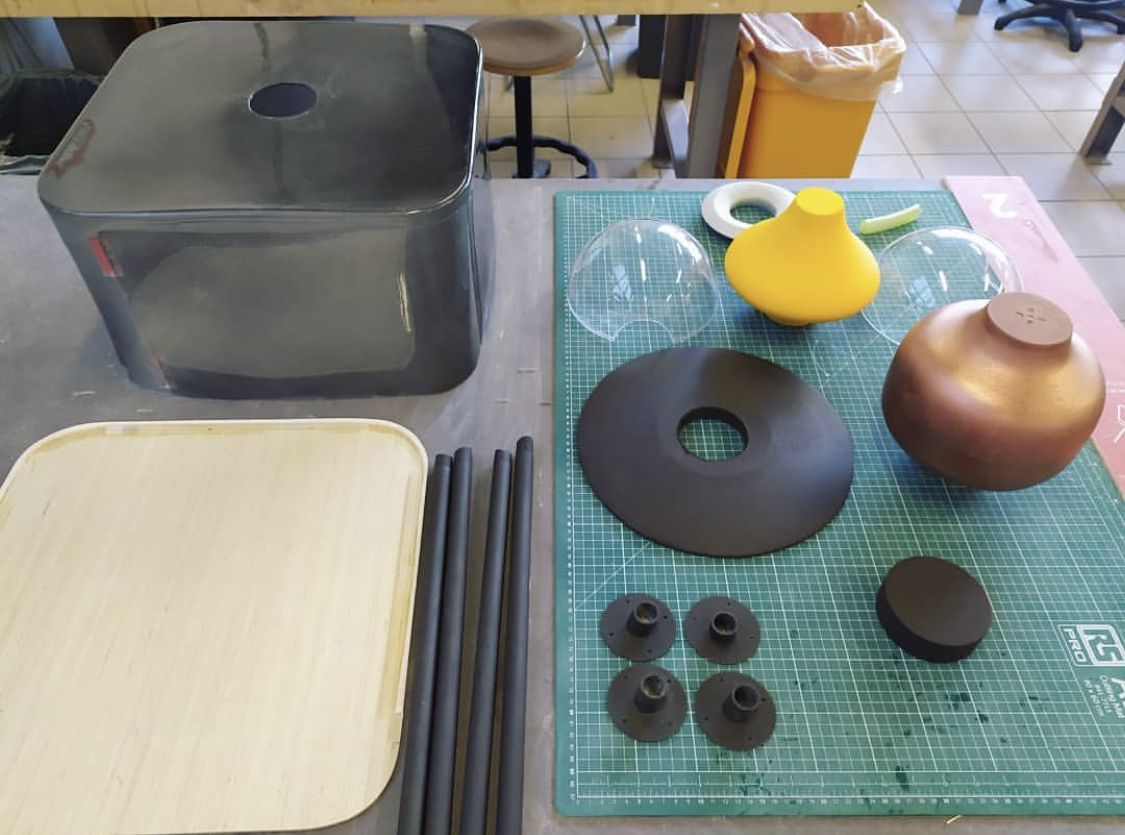The analogies upon which the author inspires and build this scenario is the research developed by Israeli researchers on how to genetically modify the metabolism processes of e.coli to transform CO2 into sugars, which can be transformed into energy, intended as power/ fuel, food (human or soil), and even chemicals.
This scenario introduced the Living Artefacts. Living artefacts are, in this case, two artefacts, but there can be even more. These two artefacts can live together or separate. The idea behind developing two of them was to suggest different ways to exploit this technology in 2050s households. The idea here is to give the user the instruments that support sustainable development (engage the user in the process) and at the same time motivate and provide the user with the data. The technology of reference is a metabolic process and genetically modified organisms (GMO), imaging a microbial solution and microbial materials in a house environment. The scientist sees several applications when it comes to this process, where the author selects to focus on two speculative proposals: (1) Transforming CO2 into house chemicals (detergent tablets), and (2) Transform CO2 into power to use at your home or share with others. Both concepts explore new technology and technological applications, accompanied by the hypothesis on the new production processes. Besides, the concepts explore how these new technologies and materials will generate new possibilities for interaction modalities and rituals (i.e., using microbial propagation instead of screens).
The author will start to introduce the Artefact_01. The Artefact_01 within this concept is concerned with the transformation of CO2 into power. This artefact is a piece of the furniture – living furniture.
The ball containing the microbial solution inhales air from the environment to feed e.coli, producing sugars that are subsequently transformed into power. The transformation system is inside the furniture, and the power gets stored in a power bank. The home has a central unit where we need to leave a full power bank, asking the user how does he/she want to use the power. The possibilities given by the system are to store the power and use it later, use it immediately, or share it with someone from the surroundings.
All the interaction occurs on and around the artefact. The ball changes colours to communicate in an unobtrusive way to the user that there is a notification. The user can interact with the artefact through holographic images and interfaces. The artefact communicates air quality, gives suggestions on how to improve the habits within the household, when the process is over, and others.
The Artefact_02 transforms CO2 into tablets for house cleaning or tablets for personal hygiene. It inhales the air from the environment, the inhaled air contains CO2 and even methane, which is feeding the e.coli, and subsequently, this concept suggests transforming the sugars into chemical tablets.
The artefact has a microbial surface on the front side, which is communicating with the environment. It captures the hazards and reversibly changes its properties – microbes propagate, expanding and reducing on the surface.
This concept introduces a new way to communicate unobtrusively through microbial propagation to influence human behaviour. Microbial propagation is reversible, and the more the user exploits the artefact, in a sense, feed the e.coli, the propagation reduces and lets us notice that the air is of better quality. The artefact is performing unobtrusively, yet the user has engaged actively in the process. The process of feeding e.coli (or air inhalation) gets activated by pouring the solution into the artefact. Then the artefact is activated, and during the process, it informs the user about the air quality, giving different suggestions on how to improve one’s environment.
::: This project was developed as a part of PhD “Design Fiction for Critical Thinking: Designing Consciously Technological Artefacts to Tackle Aware Behaviours”
::: Year: 2021/2022
::: Context: Research | Academic
